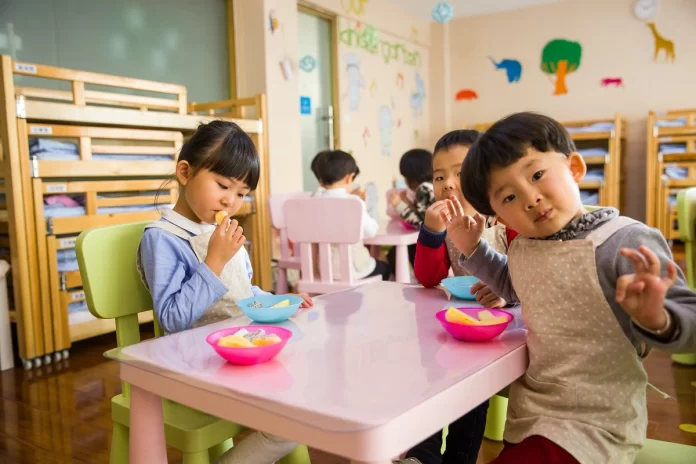Eight ways to build language and communication skills for late talkers
“Molly is 16 months old, but when she needs something she just grins and pulls at me.”
“When will Jake start talking? He still doesn’t say any full words at 19 months!”
Late talkers
This is a topic that I feel quite comfortable discussing with other parents. As the anxious mother of a child with global developmental delay and a late-talker who began speaking spontaneously in sentences at 31 months of age, I have consulted with a speech therapist more than my share.
Here are eight ways you can help your late baby develop speech and language skills.
Sign Language
Sign language is a type of alternative communication that has been proven to facilitate speech development. My younger son was opposed to sign language at first, but by the time he was 2 years old, his frustration level was so high that he wanted to find a way to communicate.
We started with a few signs like “more” and “milk”, and we got to about 40 signs within 3 months. Every time my son made a sign, I would imitate it and say the word that represented it. If I misinterpreted it, he would nod his head to say “no” and try again.
A great way to learn how to use sign language with babies or toddlers is through a DVD such as Baby Signing Time or a book like Baby Signs by Linda Acredolo.
Music
Some people learn to sing before they speak. Sometimes the tempo of music matters more than the tempo of speech. My husband and I noticed that our first child responded better to music than to speech, so we started inventing songs about everything from green beans to brushing teeth.
One of our younger son’s early successes was his love for the Beatles. I was amazed the first time he sang with “Yellow Submarine” at the top of his lungs. That is the power of music.
Vitamins
Recent research in Australia, which followed 750 pregnant women and their babies over a 10-year period, found an association between vitamin D deficiency and speech and language delays. Mothers who had low levels of the vitamin during pregnancy were twice as likely to have children with language problems.
Vitamin D is thought to be important for brain development and function, and most Americans are deficient. Other vitamins and minerals are also associated with speech development, and should be discussed with the pediatrician.
Question vs. Statement
- A surefire way to annoy both of my sons is to ask a variety of questions, especially when an adult comes up to them and begins, “How old are you? What grade are you in? Do you like school.” Are you shy?”
My kids won’t respond to an aggressive line of questioning because of performance anxiety. A more effective and polite way to communicate with a late talker is to model statements, descriptions, and exclamations such as “You’re eating chocolate ice cream. Chocolate is my favorite flavor.”
Declarative language doesn’t require feedback, but it does a better job of inviting new ideas into the conversation. Speech therapist Linda Murphy writes, “The consequences of declarative language may not be as immediate as that of imperative language because it takes time to build up and build up neural pathways that have not yet been fostered, but the increased richness of overall communication through its use.” Much does a lot worth the wait.” When the pressure to speak is reduced, speech flows more freely.
Copying
The least effective way to stimulate speech in a child is to tell the child what to say: “Ball. Say, ‘Ball.’ Heck. Say, ‘Cat.'” My older son had a few speech therapists who did this, and he always looked at them like he had a serious problem — and he never complied with their requests.
The single most effective way to stimulate speech is for the caregiver to imitate every sound the child makes.
One of the most useful articles I have found on the subject is “When ‘Simon Says’ Doesn’t Work” by Dithorn, Johnson, Walder, and Mahurin-Smith in the May 2009 issue of the American Journal of Speech-Language Pathology. Here the authors suggest, “Child imitation by a therapist may include verbal or nonverbal actions … For example, if the child yawns, the therapist may pretend to yawn (an exaggerated vowel-like sound). with) and wait to see how the child reacts.
Therapists can also imitate the child’s instinctive words; For example, if the child says ‘Baba’, the adult conversation partner may imitate ‘Baba’ and then use it as the beginning to sing ‘Baa Baa Black Sheep’.”
Provide Rich Sensory Experience
- Children with speech disorders such as apraxia of childhood speech often have differences in sensory processing. Because of these differences, sensory integration can be a valuable tool in speech therapy.
Carol Kranowitz’s book, The Out-of-Sync Child Has Fun, is full of activities you can do at home with your child. We used shaving cream, water, cotton balls, “moon sand,” edible dough and many other textured items at home to talk to our kids. We also have a slide, mini-trampoline, body sock, balance board, sit-n-spin and other movement-related toys in our house.
Play To Talk
All humans communicate through play. Play is the ideal way to encourage the exchange of ideas with young children. In his book Play to Talk, author James McDonald explains how parents can turn everyday situations into playful encounters that nurture all kinds of communication skills.
In fact, all of the above methods can be combined to create an in-home play therapy program to support your child’s unique developmental needs. I know it’s possible, because that’s what I did to help my kids learn, one was developmentally delayed and one was talking late.
Source : Friendship-circle Organization Portal




